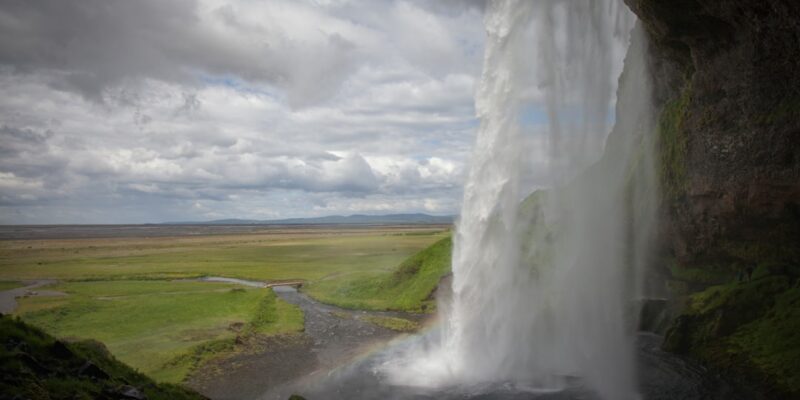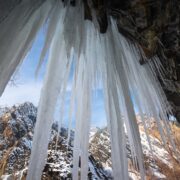
Exploring Iceland’s Majestic Waterfalls: A Thrilling Adventure
Iceland is a land of breathtaking natural beauty, and one of its most iconic features is its abundance of majestic waterfalls. With its unique landscape of glaciers, volcanoes, and geothermal activity, Iceland is a haven for waterfall enthusiasts. The country is home to over 10,000 waterfalls, ranging from small cascades to powerful torrents that plunge into deep canyons. These waterfalls are not only a sight to behold but also a testament to the raw power and beauty of nature.
Key Takeaways
- Iceland is home to some of the most majestic waterfalls in the world.
- Chasing waterfalls in Iceland is an exhilarating experience that offers breathtaking views.
- Exploring Iceland’s hidden gems can lead to discovering lesser-known but equally stunning waterfalls.
- The power and beauty of Iceland’s waterfalls are awe-inspiring and leave a lasting impression.
- Hiking and trekking to reach the best waterfalls is a rewarding adventure that requires proper planning and preparation.
The Thrill of Chasing Waterfalls
Exploring Iceland’s waterfalls is an exhilarating adventure that offers a thrill like no other. The sheer power and force of the water as it cascades down cliffs and rocks is awe-inspiring. Each waterfall has its own unique features, making every visit a new and exciting experience.
One of the most popular waterfalls in Iceland is Gullfoss, also known as the “Golden Falls.” Located in the southwest part of the country, Gullfoss is a two-tiered waterfall that drops into a deep canyon. Its name comes from the golden hue that the water takes on when it catches the sunlight. Another must-visit waterfall is Seljalandsfoss, which is famous for its unique feature that allows visitors to walk behind the waterfall and experience it from a different perspective.
Discovering Iceland’s Hidden Gems
While the popular waterfalls in Iceland are undoubtedly stunning, there are also many hidden gems waiting to be discovered off the beaten path. These lesser-known waterfalls offer a more intimate and secluded experience, away from the crowds.
One such hidden gem is Hraunfossar, located in western Iceland. Unlike most waterfalls that flow from rivers or streams, Hraunfossar emerges from beneath a lava field, creating a series of small cascades that stretch for nearly a kilometer. Another hidden gem is Haifoss, which is one of the tallest waterfalls in Iceland. Located in the Highlands, Haifoss plunges into a deep gorge, surrounded by dramatic cliffs and rugged landscapes.
Finding these hidden waterfalls requires a sense of adventure and a willingness to explore. It’s often helpful to do some research beforehand or ask locals for recommendations. Additionally, having a good map or GPS device can be invaluable in navigating the sometimes challenging terrain.
The Power and Beauty of Iceland’s Waterfalls
| Waterfall Name | Height (meters) | Flow Rate (cubic meters per second) | Location |
|---|---|---|---|
| Gullfoss | 32 | 109 | Southwest Iceland |
| Skógafoss | 60 | 62 | South Iceland |
| Dettifoss | 44 | 500 | Northeast Iceland |
| Godafoss | 12 | 38 | North Iceland |
Iceland’s waterfalls are not only visually stunning but also hold significant geological and natural importance. The country’s unique geology, with its volcanic activity and glaciers, contributes to the formation of these magnificent waterfalls.
Many of Iceland’s waterfalls are fed by glacial meltwater, which gives them their distinctive turquoise color. The glaciers also play a role in shaping the landscape, carving out deep canyons and gorges that the waterfalls flow into. This combination of glacial meltwater and volcanic rock creates a striking contrast that adds to the beauty and allure of these natural wonders.
The power of Iceland’s waterfalls is also awe-inspiring. Some of the larger waterfalls, such as Dettifoss, have an immense volume of water flowing over them, creating a thunderous roar that can be heard from a distance. Standing near these powerful cascades is an experience that truly makes you appreciate the raw force of nature.
Hiking and Trekking to Reach the Best Waterfalls
One of the best ways to fully experience Iceland’s waterfalls is by hiking or trekking to reach them. Not only does this allow you to get up close and personal with the waterfalls, but it also offers stunning views of the surrounding landscapes.
There are numerous hiking trails in Iceland that lead to waterfalls, ranging from easy walks to more challenging treks. One popular trail is the Fimmvörðuháls hike, which takes you through the Thórsmörk Nature Reserve and offers breathtaking views of several waterfalls, including Skógafoss and Seljalandsfoss.
For those seeking a more challenging adventure, the Laugavegur Trail is a multi-day trek that takes you through some of Iceland’s most spectacular landscapes, including the stunning Þórsmörk Valley and the colorful rhyolite mountains of Landmannalaugar. Along the way, you’ll encounter several waterfalls, such as Háifoss and Skógafoss.
Capturing the Perfect Shot: Photography Tips
Iceland’s waterfalls provide endless opportunities for stunning photography. To capture the perfect shot, there are a few tips and tricks to keep in mind.
First and foremost, it’s important to have the right equipment. A sturdy tripod is essential for long exposure shots, which can create a silky-smooth effect on the flowing water. A wide-angle lens is also useful for capturing the grandeur of the waterfalls and their surroundings.
When it comes to settings, using a small aperture (such as f/11 or f/16) will help ensure that both the waterfall and the surrounding landscape are in focus. A slow shutter speed (around 1-5 seconds) will create that smooth, flowing effect on the water. It’s also important to experiment with different angles and compositions to find the most interesting and unique perspectives.
The Best Time of Year to Visit Iceland’s Waterfalls
The best time of year to visit Iceland’s waterfalls largely depends on personal preferences and what you hope to experience. Each season offers its own unique charm and beauty.
During the summer months (June to August), Iceland experiences long daylight hours, allowing for more time to explore and photograph the waterfalls. The lush green landscapes and wildflowers in bloom add a vibrant touch to the scenery. However, this is also the peak tourist season, so popular waterfalls can be crowded.
In the winter months (December to February), Iceland transforms into a winter wonderland, with frozen waterfalls and snow-covered landscapes. This is a magical time to visit if you’re looking for a more serene and peaceful experience. However, the weather can be unpredictable, and road conditions may be challenging.
Combining Waterfall Exploration with Other Adventures
While exploring Iceland’s waterfalls is an adventure in itself, there are also many other activities and excursions that can be combined with waterfall exploration to create an unforgettable trip.
One popular option is to combine a visit to the Golden Circle, which includes the famous Gullfoss waterfall, with a snorkeling or diving tour in Silfra. Silfra is a fissure located in Þingvellir National Park, where you can snorkel or dive between the tectonic plates of North America and Eurasia in crystal-clear glacial water.
For those seeking more adrenaline-pumping activities, glacier hiking or ice climbing tours are a great option. These tours take you onto Iceland’s glaciers, where you can explore ice caves, hike on the glacier’s surface, and even try your hand at ice climbing.
Sustainable Travel: Protecting Iceland’s Natural Wonders
As more and more people flock to Iceland to experience its natural wonders, it’s important to prioritize sustainable travel practices to protect these fragile ecosystems.
One of the most important things travelers can do is to stick to designated paths and trails when visiting waterfalls. This helps prevent erosion and damage to the surrounding vegetation. It’s also crucial to pack out any trash and leave no trace behind.
Another way to minimize your environmental impact is by choosing eco-friendly transportation options. Public transportation or carpooling are great alternatives to renting a car, as they reduce carbon emissions and congestion on the roads.
The Unforgettable Experience of Iceland’s Waterfalls
Visiting Iceland’s waterfalls is an experience that will stay with you long after you’ve left the country. The sheer power and beauty of these natural wonders are awe-inspiring and leave a lasting impression.
Whether you’re standing in front of a towering waterfall, hiking through breathtaking landscapes, or capturing stunning photographs, exploring Iceland’s waterfalls is an adventure like no other. The memories and experiences gained from these encounters with nature are truly unforgettable. So, pack your bags, grab your camera, and get ready to embark on an adventure of a lifetime in Iceland’s majestic waterfalls.
FAQs
What are some popular waterfalls to visit in Iceland?
Some popular waterfalls to visit in Iceland include Gullfoss, Seljalandsfoss, Skógafoss, and Dettifoss.
What is the best time of year to visit Iceland’s waterfalls?
The best time of year to visit Iceland’s waterfalls is during the summer months (June-August) when the weather is milder and the days are longer.
Are there any safety precautions to take when visiting Iceland’s waterfalls?
Yes, visitors should be cautious when visiting Iceland’s waterfalls as the terrain can be slippery and dangerous. It is important to stay on designated paths and follow all posted signs and warnings.
What is the best way to get to Iceland’s waterfalls?
The best way to get to Iceland’s waterfalls is by renting a car or joining a guided tour. Many of the waterfalls are located off the main roads and require a bit of hiking to reach.
What is the entrance fee for Iceland’s waterfalls?
Most of Iceland’s waterfalls do not have an entrance fee, but some may require a small parking fee. It is always best to check ahead of time to avoid any surprises.


















